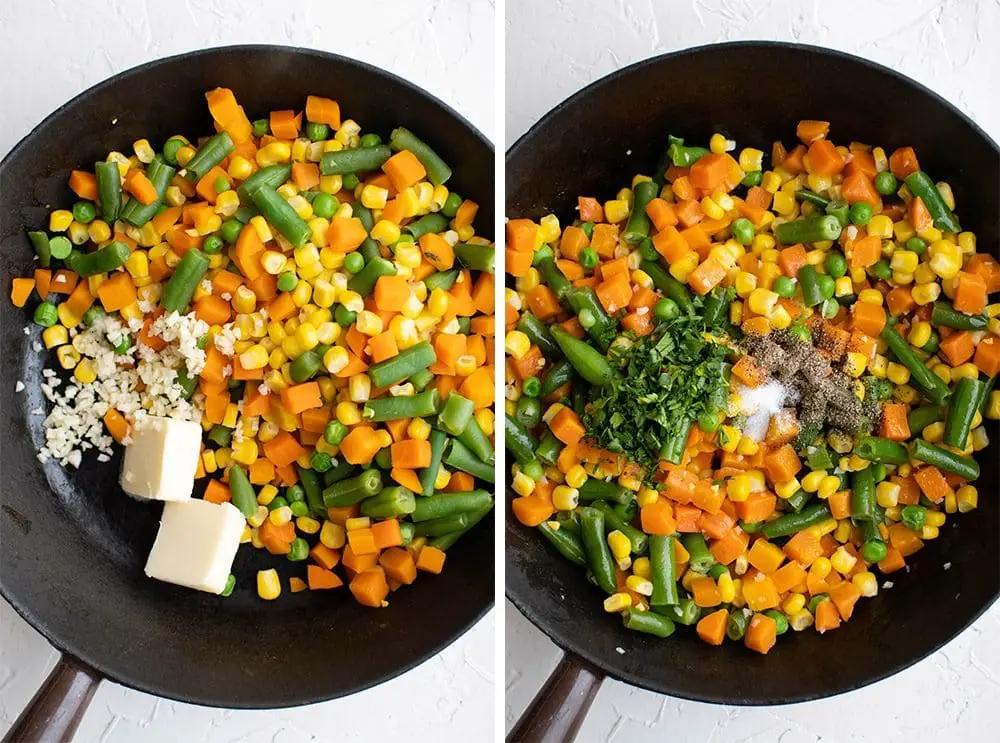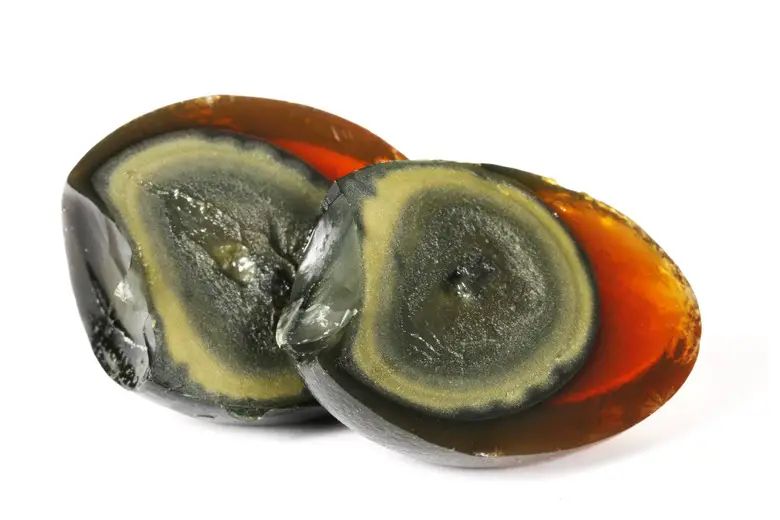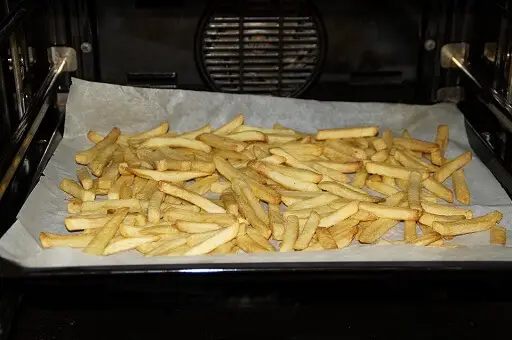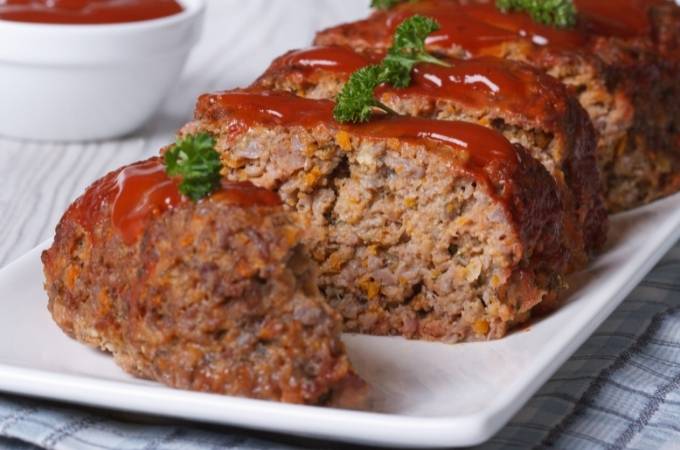Reheating frozen vegetables has always been a hot topic of debate. This article aims to answer the age-old question: can frozen vegetables be reheated once they are cooked? Many people tend to think that it’s safe to reheat cooked frozen vegetables, while others believe that doing so is dangerous.
There’s no denying that cooking and reheating food, especially veggies, requires utmost caution and careful attention. This article will provide detailed answers to questions about reheating frozen vegetables, including whether it’s safe or not, how it affects their nutritional value, and tips on how to retain those nutrients even after reheating them.
What Happens When You Reheat Frozen Vegetables?
To understand what happens when you reheat frozen vegetables, we must first discuss their physical state after being thawed. After being in the freezer for some time, the texture of frozen veggies changes significantly. Once the ice crystals that formed during freezing begin to melt, they can exacerbate any cell walls that may have already been weakened from initial cooking.
Thawing process can make veggies mushy or watery, so this has an impact on how they hold up during the reheating process as well. When you reheat these thawed veggies again, especially if you do so slowly or at a low temperature like when sautéing or stir frying them – it can further break down their already weakened structure.
Safety Concerns When Reheating Frozen Vegetables
When it comes to food safety, one should always be cautious with reheated foods regardless of their type whether its meat or veggies. This notion holds strongly even with frozen vegetables that have already been cooked! There are two primary risks associated with reheating cooked and frozen vegetables .
Bacterial Growth
The first concern is bacterial growth. Improper storage temperatures and mishandling (exposing the veggies to air bacteria) among other things could cause bacterial growth on the food and this can be reactivated during reheating, especially if not done so at a high enough temperature. This is why it’s essential to store cooked veggies in safe temperatures of less than 40F, especially if you plan to reheat them.
Nutrient Loss
Another issue that comes up with reheating frozen vegetables is nutrient loss. Several factors could affect the nutritional quality of any veggies, including freezing and reheating them. During the freezing process, some vitamins and minerals may be damaged or lost. Then when the food is reheated again, there’s a possibility more nutrients will leach out as well due to calls breaking down further or being diluted in fluids from cooking.
Methods for Safely Reheating Frozen Vegetables
So how should you go about safely reheating frozen vegetables? Below are some best practices worth keeping in mind:
Choosing the Right Method
One common misconception about reheating frozen vegetables is that microwaving them is an effective method. While it works for many other foods, microwave heating can heat unevenly and break apart thawed veggies’ delicate structures (as mentioned above).
The better way to deal with thawed frozen veggies is by heating them up over high heat in a pan or baking dish instead since this provides relatively even heating throughout each particle helping veggies retain their structural integrity better.
Time Limits for Different Types of Vegetables
When it comes to different types of veggies like root crops vs leafy greens they each require different time limits when being reheated due differences in water content and cell structure.
While frozen beans or peas may only need just a minute or two to reheat completely leafy greens such as spinach take a bit longer. Thicker and less delicate vegetables like frozen corn might need even more time than both examples mentioned prior do ensure they are warmed through entirely.
If you want to risk vegetable chunks blending together then sautéing mixed frozen veggies is a good option though. Saute frozen vegetables are usually ready in 5-10 minutes – depending as always on your heat source.
Other Factors to Consider When Reheating Frozen Vegetables
Aside from the actual reheating process, it’s also vital that you consider other factors surrounding the growth and preparation of frozen vegetables when reheating.
Understanding the Origins of the Vegetable Mix
It’s crucial that one understands where they got their vegetable mix from before freezing or reheating it, some packets contain additives or preservatives which will be affected differently than others.
When dealing with mixed vegetables made for freezing and reheating, look specifically on the package for instructions on how to reheat them properly based on their contents such as avoiding overcooking certain ingredients.
Recommendations for Mixed Vegetable Mixes
If you ever unsure about safety or cooking times found for mixed veggie packs then always just err on side caution. It’s important to know if any components are in high-risk categories like leafy greens, so follow guidelines like quick-warming all items in boiling water before consumption which should effectively lower any potential disease threats.
The Role of Preservatives in Freezing and Tempering Mixtures
Preservatives are commonly used in many types of food processes aside from freezing including: canning (for long shelf life), fermentation (like pickling) and even smoking which adds flavors while preventing spoilage. Still preservatives are not to rely solely upon since these particles are generally designed bridge gaps by packaging mistakes rather than a full guarantee you’ll avoid bacterial growth during storage or prep time after thawing either!
Tips on How to Enhance Nutritional Value When Reheating Frozen Vegetables
While moderate nutrient loss during freezing and reheating veggies is inevitable, there are simple ways to mitigate this:
Avoid Overcooking
Cooking methods such as boiling can lead to more significant nutrient losses because lengthy cooking times can cause water-soluble vitamins like vitamin C to leach out faster from food. Reheated frozen vegetables are no different, and it’s crucial that you don’t overcook them, as this could damage many of the essential vitamins besides spoiling their taste.
Incorporate Nutrient-Dense Ingredients
Adding other nutrient-rich components like spices, herbs, healthy fats (oil or avocado), or seeds into your reheated frozen veggies can be a great way to pump up their nutritional value. Herbs rich in vitamin A (like basil) and omega-3 rich seeds for example make great additions when sautéing veggie mixes together if you’re looking have health impact matter more than flavor alone!
Storage Options for Frozen Vegetables after Cooking and Reheating
Once fully cooked and soon afterwards afterward reheated, leftovers should be stored in containers with tight-fitting lids to keep air away. Tightly seal these containers before storing them on a shelf in the fridge or freezer – ensuring there is no expiration date passed upon initial freezing!
Store any remaining foods at less than 40 F which do not allow harmful bacteria growth to resume especially if they need to be further reheated later on following storage.
Conclusion
So there we have it folks! The age-old question of whether or not one can reheat cooked and frozen vegetables is now settled. Yes, you can reheat them safely so long as you follow the tips we’ve listed above like choosing the right method and timing based on vegetable type while prioritizing safety first every single time.
While taking some considerable losses along the way; reheated frozen veggies retain nutritive power worth mentioning incorporating nutrient-density ingredients for added value measure. If you take all of these things into consideration, then you’ll never have to worry about getting sick from eating reheated frozen vegetables again!
Q&A
- Can I reheat frozen vegetables after cooking? Yes, you can reheat frozen vegetables after cooking them. However, make sure to thaw them before reheating. This will help ensure that they cook evenly and don’t become soggy or mushy.
- Is it safe to eat reheated frozen vegetables? Yes, as long as you handle the thawing and reheating process properly, it’s generally safe to eat reheated frozen vegetables. Make sure to follow recommended food safety practices to minimize the risk of foodborne illness.
- What’s the best way to thaw frozen vegetables before reheating? The best way to thaw frozen vegetables is by placing them in the refrigerator overnight or at room temperature for a few hours until they’re no longer frozen solid. Alternatively, you can microwave them on a defrost setting until partially thawed.
- What are some creative ways I can use leftover reheated frozen veggies? Leftover reheated frozen veggies can be used in a variety of recipes! Add them to soups and stews for extra flavor and nutrition, mix them into omelets or frittatas for a quick and easy breakfast, or use them as a base for homemade veggie burgers or meatless meatballs. The possibilities are endless!




